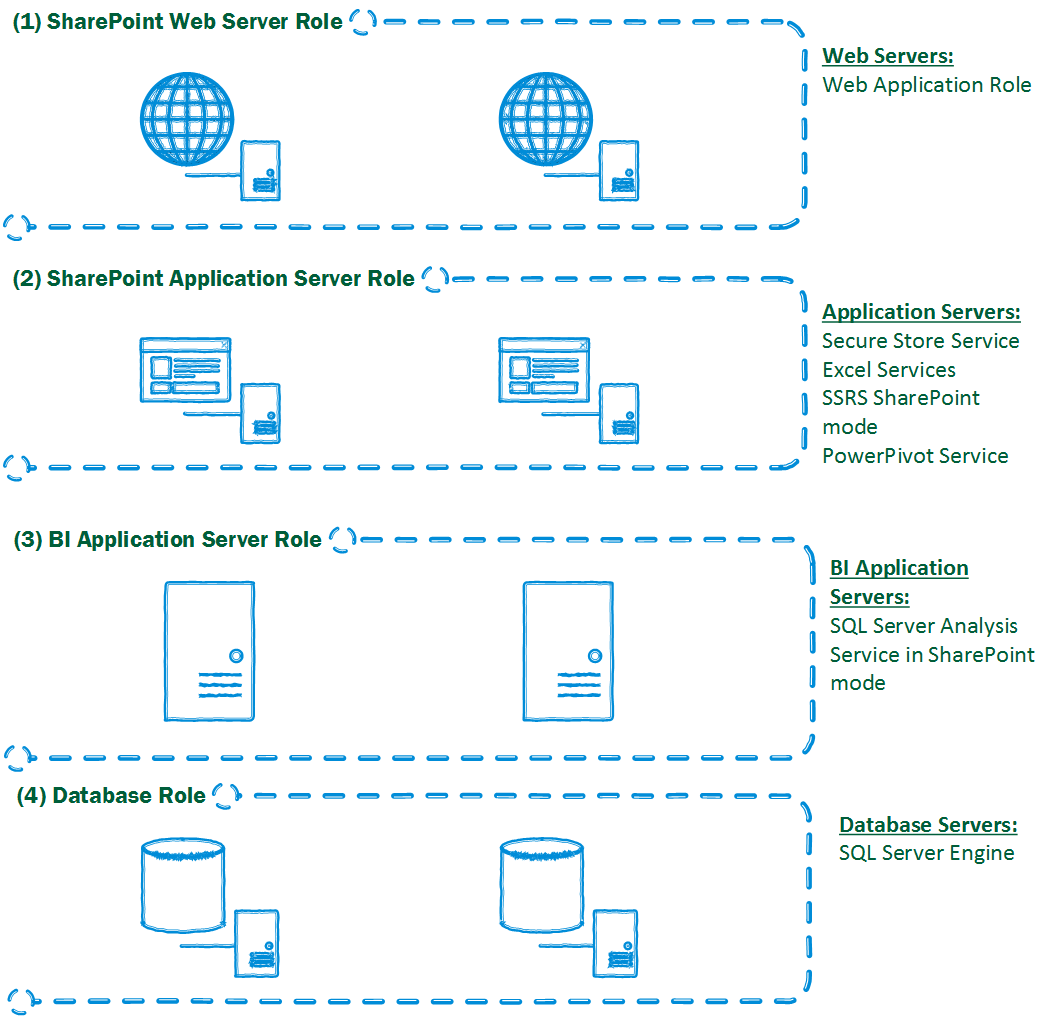1. Introduction - PowerPivot and PowerView for SharePoint 2013 & SQL 2012 in a Scale out environment
There are many great articles that talks about deploying PowerPivot and PowerView. Very few focus on the complete steps start to finish for deploying a multi-tier BI farms for PowerPivot and PowerView. I will focus on this scenario in this article and I will also highlight few issues that you might run into and how you address them.
Products versions
Since there are a lot of Microsoft products involved in this setup, I thought it would be helpful to determine which versions of these products I wrote my article about:
- Microsoft SharePoint Server 2013
- Microsoft SQL Server 2012
- Microsoft SQL Server Reporting Services 2012
- Microsoft SQL Server Analysis Services 2012
- Windows Server 2012
Server architecture
To achieve the minimum level of high availability you need to have at least two servers under each role. We have 4 different roles:
- Web Application Role: SharePoint web application servers (aka WFE)
- Application Server Role: SharePoint application servers (aka App Servers)
- BI Application Server Role: SQL Server Analysis Services for PowerPivot servers
- Database Role: SQL Database servers
This is the first article of a series I'm writing that covers different aspects of the topic:
- Introduction --> You are here
- Hardware requirements and sizing [Coming soon]
- Software requirements [Coming soon]
- Database storage requirements [Coming soon]
- Install and configure PowerPivot & PowerView in a scale out environment
- Known issues and workarounds
